↓ Time moves into one Direction - Memory into the other
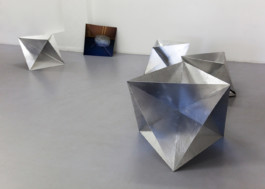
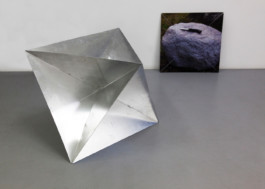
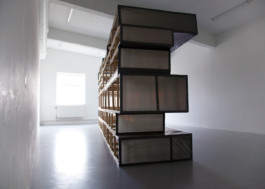
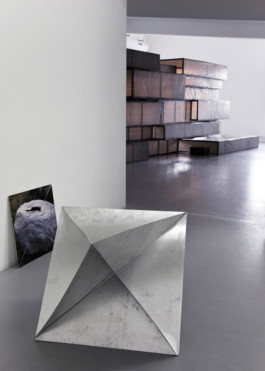
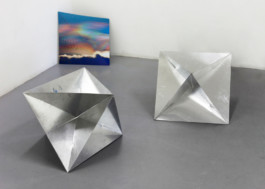
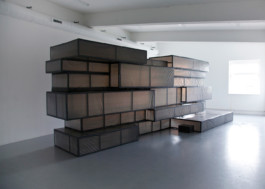
Traditional conceptualizations of war imply the spatial presence of both physical force and a striking visual appearance upon the battlefield. In contrast to such notions, contemporary theaters of war rely far more upon the ability to disappear, to bewilder, and to deceive. Where traditional tactics engage the direct application of mass towards the achievement of goals, the other (and often more effective) tactics resort to techniques of camouflage, remote action and artifice; decor, dress-up and disguise; the imitation of reality. In other words, techniques that are very much associated with the arts.
Such artistic means were adopted by one particular unit of the former East German army, Tarnen und Täuschen, translating quite literally to "disguise and deception". This aptly named base had as its sole aim the invention and construction of the techniques and materials of camouflage, decoy weaponry and other, essentially fake, military equipment. As a central stratagem, this meant the production of adaptations to new and changing environments of conflict. Being the only East German military unit to remain after the unification with West Germany, this army base soon found itself having to transform and adapt to a much different socio-political environment. Still existing within the now unified German military, Tarnen und Täuschen continues to function under a new set of conditions in the development of disguises and deceptions for present day warfare. Through her research into the history and present day operations of the Tarnen und Täuschen military unit, artist Anika Schwarzlose encountered a military division largely engaged with aesthetic considerations.
In her exhibition at KHM Gallery, Anika Schwarzlose presents a range of works, each probing from a different angle into the borderland of adaptation and impact, illusion and truth. Amongst diamond-shaped sculptural elements, that resemble radar reflectors, a series of videos is displayed, depicting official buildings - symbols of power and societal organization, which are juxtaposed with sheets of green - engaging a colour that is commonly used in the film industry to mark fields of filmed material designated for being cut out and replaced by fictitious content.
Core element of the show is a structure bordering on both sculpture and architecture. Initiated in homage to a 1926 monument to Karl Liebknecht and Rosa Luxemburg by German architect Mies van der Rohe, this work functions, in the spatial sense, to block one’s field of vision whilst at the same time, through its use of camouflage material, to mimic the act of disappearance. Van der Rohe's original monument was destroyed by the army during the Nazi regime. Through its manifestation in consultation and collaboration with the Tarnen und Täuschen army unit, Schwarzlose's work forms a cycle of appearance and disappearance. This work thus manifests a paradoxical existence as a disguised monument to a monument.
YEAR
2012
MATERIALS
Mixed media / video
IN COLLABORATION WITH
Emil Nilsson and Brian D. McKenna
SHOWN AT
KHM Gallery, Malmö (Sweden)
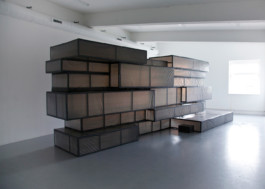
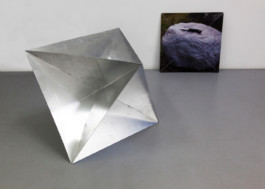
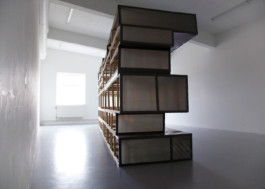
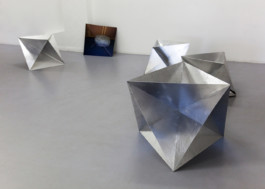
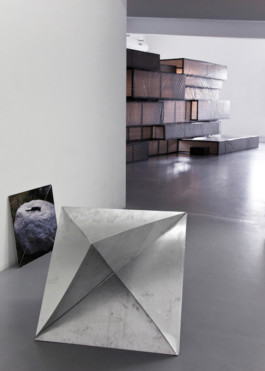
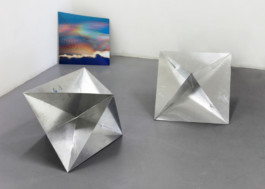
↓ Time moves into one Direction - Memory into the other






Traditional conceptualizations of war imply the spatial presence of both physical force and a striking visual appearance upon the battlefield. In contrast to such notions, contemporary theaters of war rely far more upon the ability to disappear, to bewilder, and to deceive. Where traditional tactics engage the direct application of mass towards the achievement of goals, the other (and often more effective) tactics resort to techniques of camouflage, remote action and artifice; decor, dress-up and disguise; the imitation of reality. In other words, techniques that are very much associated with the arts.
Such artistic means were adopted by one particular unit of the former East German army, Tarnen und Täuschen, translating quite literally to "disguise and deception". This aptly named base had as its sole aim the invention and construction of the techniques and materials of camouflage, decoy weaponry and other, essentially fake, military equipment. As a central stratagem, this meant the production of adaptations to new and changing environments of conflict. Being the only East German military unit to remain after the unification with West Germany, this army base soon found itself having to transform and adapt to a much different socio-political environment. Still existing within the now unified German military, Tarnen und Täuschen continues to function under a new set of conditions in the development of disguises and deceptions for present day warfare. Through her research into the history and present day operations of the Tarnen und Täuschen military unit, artist Anika Schwarzlose encountered a military division largely engaged with aesthetic considerations.
In her exhibition at KHM Gallery, Anika Schwarzlose presents a range of works, each probing from a different angle into the borderland of adaptation and impact, illusion and truth. Amongst diamond-shaped sculptural elements, that resemble radar reflectors, a series of videos is displayed, depicting official buildings - symbols of power and societal organization, which are juxtaposed with sheets of green - engaging a colour that is commonly used in the film industry to mark fields of filmed material designated for being cut out and replaced by fictitious content.
Core element of the show is a structure bordering on both sculpture and architecture. Initiated in homage to a 1926 monument to Karl Liebknecht and Rosa Luxemburg by German architect Mies van der Rohe, this work functions, in the spatial sense, to block one’s field of vision whilst at the same time, through its use of camouflage material, to mimic the act of disappearance. Van der Rohe's original monument was destroyed by the army during the Nazi regime. Through its manifestation in consultation and collaboration with the Tarnen und Täuschen army unit, Schwarzlose's work forms a cycle of appearance and disappearance. This work thus manifests a paradoxical existence as a disguised monument to a monument.
YEAR
2012
MATERIALS
Mixed media / video
IN COLLABORATION WITH
Emil Nilsson and Brian D. McKenna
SHOWN AT
KHM Gallery, Malmö (Sweden)





